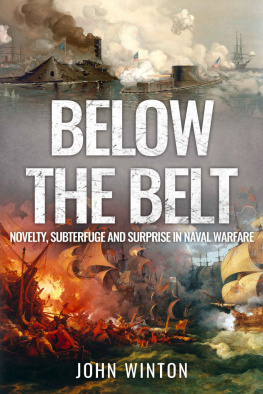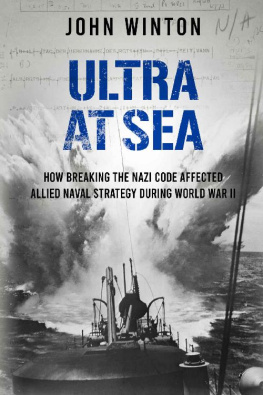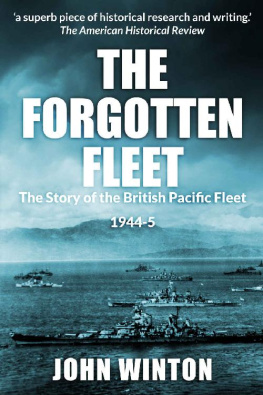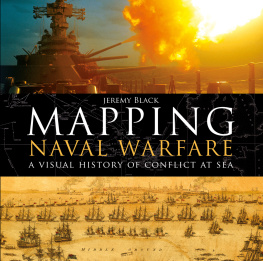John Winton - Below the Belt: Novelty, Subterfuge and Surprise in Naval Warfare
Here you can read online John Winton - Below the Belt: Novelty, Subterfuge and Surprise in Naval Warfare full text of the book (entire story) in english for free. Download pdf and epub, get meaning, cover and reviews about this ebook. year: 2022, publisher: Sapere Books, genre: Adventure. Description of the work, (preface) as well as reviews are available. Best literature library LitArk.com created for fans of good reading and offers a wide selection of genres:
Romance novel
Science fiction
Adventure
Detective
Science
History
Home and family
Prose
Art
Politics
Computer
Non-fiction
Religion
Business
Children
Humor
Choose a favorite category and find really read worthwhile books. Enjoy immersion in the world of imagination, feel the emotions of the characters or learn something new for yourself, make an fascinating discovery.
- Book:Below the Belt: Novelty, Subterfuge and Surprise in Naval Warfare
- Author:
- Publisher:Sapere Books
- Genre:
- Year:2022
- Rating:5 / 5
- Favourites:Add to favourites
- Your mark:
- 100
- 1
- 2
- 3
- 4
- 5
Below the Belt: Novelty, Subterfuge and Surprise in Naval Warfare: summary, description and annotation
We offer to read an annotation, description, summary or preface (depends on what the author of the book "Below the Belt: Novelty, Subterfuge and Surprise in Naval Warfare" wrote himself). If you haven't found the necessary information about the book — write in the comments, we will try to find it.
Below the Belt: Novelty, Subterfuge and Surprise in Naval Warfare — read online for free the complete book (whole text) full work
Below is the text of the book, divided by pages. System saving the place of the last page read, allows you to conveniently read the book "Below the Belt: Novelty, Subterfuge and Surprise in Naval Warfare" online for free, without having to search again every time where you left off. Put a bookmark, and you can go to the page where you finished reading at any time.
Font size:
Interval:
Bookmark:
BELOW THE BELT
Novelty, Subterfuge and Surprise in Naval Warfare
John Winton

TABLE OF CONTENTS
CHAPTER 1
It was new it was singular it was simple! Nelson wrote to Lady Hamilton. When I came to explain to them the Nelson touch, it was like an electric shock. Nelson had rejoined his flagship Victory on the evening of 28 September 1805 and had called his captains, his band of brothers, on board to brief them. Afterwards, in this letter of 1 October, Nelson succinctly expressed, in a few striking phrases, the perennial aims of every successful naval commander: to confuse and confound his enemy with some new weapon or new tactic, to make some move which was unexpected, unusual and even unfair. He succeeded in carrying his subordinate commanders with him; a plan was useless unless those who were to carry it out understood and had faith in it. From admirals downwards, Nelson said, it was repeated: It must succeed, if ever they will allow us to get at them.
The plans Nelson explained to his captains before Trafalgar were indeed revolutionary in terms of naval tactics of the time. For a hundred years before Nelson, fleets had fought in formal lines of battle, manoeuvring in rigid formation until they came within range of each other. Once within hitting range, the tactic was to press alongside and stay alongside pouring in fire as fast as she could suck it until, as every English sailor confidently expected (and with good reason), the enemy struck his flag.
Close quarter fighting was still Nelsons intention but he intended a more flexible, original approach. He would have his fleet in three divisions. One, of sixteen ships, he would lead himself; Collingwood would lead another. There would also be an advance squadron of eight of the fastest ships lying up to windward. Collingwood would aim to cut the enemys battle line twelve ships from its rear. Nelson himself would go for the centre, where he expected his adversary Villeneuve to be. Those enemy ships not attacked at first, in the leading section of their fleet, would need time to turn and come back. In the meantime, Nelson and Collingwood would defeat their opponents in detail.
As Nelson said, Nothing is certain in a sea fight, and in the event he had less ships than he expected and thus had no windward squadron. The rest of the plan, however, worked as Nelson had hoped and prayed it would.
Nelsons plan was all the more startling (some of his captains wept when they heard it) because the age of sail offered a commander few opportunities for innovation or guile, apart from disguise or decoy, or bluffing or misleading his opponent. Tactically, the need to gain and hold the weather gauge was paramount. In this sense the wind imposed a kind of tactical simplicity. Technological advance in weapons was so slow over the centuries that Victory herself, with some improvements in gun mountings and navigational instruments, was still essentially the same weapon of war as Sovereign of the Seas , launched in 1637.
Yet, within the limitations of his time, Nelson was following a tradition which goes back in recorded western naval history to the Greek admirals of the Peloponnesian War. The Greeks of the fifth century BC had an attitude to naval warfare which survives today. The most successful of their commanders did not consider naval engagements as mere land battles fought on board ships. They knew there was a science of the sea, and they had navies largely manned by citizens who were quite capable of understanding subtle psychological debating points about their adversaries.
The Athenians entered the Peloponnesian War in 431 BC with the best navy in the known world at the time and a confidence born of the crushing strategic naval victory over the Persian fleet at Salamis, which was still within living memory. The Greeks had, in fact, prepared the way for their victory at Salamis with a trick which was just as effective in the Second World War: the delivery into the enemys councils of false or misleading information about ones own intentions. Xerxes had 1207 ships (according to Aeschylus) against Themistocles 310. The Greeks had somehow to lure the Persians into the narrow waters off Salamis where the restricted space would nullify the advantage of numbers. Just as the body of a Royal Marine officer bearing false information about the next Allied landing in the Mediterranean was allowed to fall into German hands, so Themistocles dispatched the famous messenger Sicinnus, by night, to Xerxes camp with false intelligence: the Greeks were demoralised, contemplating flight, and on the morrow would either make no resistance or fight amongst themselves. Sicinnus was believed, just as The Man Who Never Was was believed, and the Persian ships were lured into the narrows.
The Greeks were adept at psychological warfare, both to demoralise opponents and to hearten their own side. They were ever resourceful in devising tactic, and counter-tactic, ploy and counterploy. In a sense the Greeks could be said to have constructed the historical framework for any study of unusual or unorthodox fighting at sea.
The standard Greek warship of the line was the trireme, manned by 5 officers, 25 deck-hands or boatswains, and 170 oarsmen (ranged and rowing in a manner which is still a matter of debate amongst naval historians). Although marines were often embarked for boarding an enemy, or as additional weapon-throwers, the triremes main weapon was the ram. The two most important offensive manoeuvres were the diekplous , in which one fleet endeavoured to break through its opponents line, then wheel about and ram the enemys unprotected sides, or the periplous , in which one fleet attempted to row around the ends of its opponents line and take its ships in the rear. Both manoeuvres required a high degree of training and seamanship.
A typical action, fought and won by Phormio, one of the best admirals of the ancient world, took place in the Gulf of Patras one night late in the summer of 429 BC. Phormio was leading a fleet of 20 Athenian triremes across the Gulf when he sighted a formation of some 47 ships of the Peloponnesian alliance, Corinthians and Spartans. It was actually an invasion fleet, drawn up in an unusual way, being formed in a circle each ship with its bows projecting outwards, and just close enough to its neighbour to prevent a diekplous . This was, in fact, the very formation used successfully by the Athenians themselves in an action off Cape Artemisius two months before Salamis. In the centre of the Peloponnesian circle were some light, troop-carrying craft, with 5 of the fastest and best-equipped warships, ready to go and reinforce any threatened sector of the circle.
The action took place midway in the Gulf, off the town of Patras. Phormio at first made no attempt to attack, and forbade his ships to do so. Instead, the Athenian triremes rowed steadily round and round the perimeter of the Peloponnesian circle, forcing it inwards, as though they were sheepdogs herding a flock of ewes. Phormio expected his opponents to lose their tight, careful formation and to break up as they were crowded in upon each other. He also knew that as they rounded the nearest point of land, a wind would very probably begin to blow up from the Gulf, as it almost always did about dawn.
So it came about. At dawn, the wind got up sharply, the water grew choppy, and the Peloponnesians, already compressed too close for comfort, had to try and deal simultaneously with the wind and sea and with their own small craft, which were getting in the way. As Phormio watched from without, the Peloponnesians collapsed into confusion. Ships collided, entangled their oars, and their captains blamed each other. The crews were too fully occupied in fending off their friends to bother about their enemy. As Thucydides described it, what with the shouting and swearing and yelling, nobody could hear what the captains were saying or the orders given by the boatswains.
Next pageFont size:
Interval:
Bookmark:
Similar books «Below the Belt: Novelty, Subterfuge and Surprise in Naval Warfare»
Look at similar books to Below the Belt: Novelty, Subterfuge and Surprise in Naval Warfare. We have selected literature similar in name and meaning in the hope of providing readers with more options to find new, interesting, not yet read works.
Discussion, reviews of the book Below the Belt: Novelty, Subterfuge and Surprise in Naval Warfare and just readers' own opinions. Leave your comments, write what you think about the work, its meaning or the main characters. Specify what exactly you liked and what you didn't like, and why you think so.













